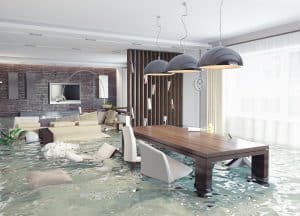When a drain backs up in your home, or a pipe bursts, or a flood happens, at first there’s panic—then comes the onslaught of questions such as How do I fix this? What now? How do I replace my damaged things? And, of course: Will my homeowner’s insurance cover this?
Any situation like this is obviously very frustrating, scary, and stressful. But the more you know about it, the more you’ll be able to handle it if it ever happens to you. That’s why our team at Centennial Construction & Remodeling Services, Inc., put together a few things that you should know about water damage.
- Your insurance company needs to know about it immediately.
As soon as you can, call your insurance company. This way, they can begin the claims process instantly, and they will also be able to walk you through the steps you need to take—starting with how to shut off the water so that it will stop. Also, there are different policies for different types of water damage. For example, did you know that flood damage is not covered by home insurance? It’s an entirely separate policy. However, most policies cover sudden damage, like water damage from a storm or from a leaking washing machine. Make sure you explain the water damage thoroughly to your insurance company.
- Once water damage has happened, it’s just going to get worse until it’s fixed.
Water damage just keeps, well, damaging until it’s remedied. Not only will you have water damage, but mold growth will begin, and this can pose serious health risks. To prevent mold from growing, you’ll need the damage to be totally dried within 48 hours. To do this, you’ll need to contact a company that specializes in water damage restoration and emergency water extraction. They will have the professional water removal equipment and drying equipment to get the job done as quickly as possible.

- The water may be contaminated.
Water damage has three categories, depending on how polluted the water source was that caused the damage. For example:
- Category 1 is water from a clean source, such as a fresh water line for a dishwasher. This water will not cause any sickness.
- Category 2 is water that may cause illness through contact due to bacteria.
- Category 3 is water that is very contaminated, such as toilet overflow, sewage backup, or storm water. This category can cause severe illness or even death.
Category 1 water could possibly turn into Category 2 or 3 water if it comes into contact with dirty flooring or soil, or if it stands too long. The more polluted water is, the more aggressive measures the restoration company will have to be in order to properly clean your property. You may also have to say goodbye to some of your furnishings if they have been contaminated.
Has water damage happened to you? At Centennial Construction & Remodeling Services, we handle water damage, from plumbing failures to burst water heaters. As an outstanding water damage restoration team serving Carmel, Noblesville, Zionsville, Westfield, Fishers, or any northern Indianapolis area, we will take care of the damage to your property. Contact us at (317) 848-7634 to find out more.
